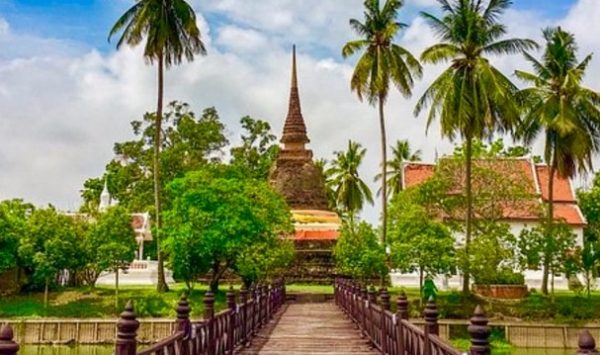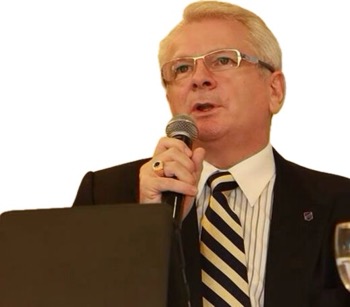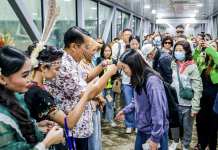HUA HIN, 19 MAY 2025: Thailand’s once-thriving tourism sector is now navigating turbulent waters. Foreign arrivals are falling short of expectations, with a sharp dip in Chinese travellers, growing regional competition, and a stubborn hangover from global shocks and conflicts. Meanwhile, hotel occupancies are dwindling, and trust in the government’s response is wavering.
A controversial proposal presented by the Ministry of Tourism and Sports recommends that THB800 million be spent supporting foreign-based OTAs. It has drawn fire from the Thai Hotels Association, while the Tourism Authority of Thailand (TAT) is quietly adjusting its lofty 2025 target of 40 million arrivals down to a more sobering 35.5 million — matching last year’s numbers.

The Federation of Thai Tourism Associations (FETTA) is sounding the alarm and preparing a direct appeal to the Prime Minister. With tourism still seen as Thailand’s last economic engine, the time for action is now.
Beyond the Crisis: A 10-Point Plan to Help Build-Back-Better Tourism in Thailand
If the last few years have taught us anything, returning to “business as usual” isn’t good enough. Thailand’s future lies not just in numbers but in the quality of experiences we offer — and in protecting what makes us special.
1. Look Beyond the Numbers: Protect What Matters.
Tourism is not just GDP. It’s culture, community, and ecology. Growth must be measured by how well we safeguard local identity and avoid the trap of overtourism, not by the benchmarks of arrivals and receipts. Our future generations — our children — deserve to inherit more than crowded beaches and overbuilt hillsides.
Recent signs of international tourist misbehaviour — particularly in Phuket and Pattaya — are deeply concerning. Locals are becoming tired of such unruly behaviour and know they have a choice. Local anger and frustration are unsuitable for tourism — a potential death knell. Reports of fighting, public drunkenness, and the open use of cannabis are harming Thailand’s family-friendly image and deterring more conservative travellers, especially the older generation. The unmistakable waft of drug smoke in public areas has become a frequent complaint. Zoning for cannabis use and stricter enforcement in tourist areas must be considered if Thailand wishes to attract higher-value, responsible tourism.
And it’s not just behaviour. The rising cost of travel to Thailand is beginning to bite. When combined with a global tourism slowdown and reduced outbound Chinese travel, Thailand must fight harder for every tourist dollar without compromising its values or long-term vision.
2. Wellness Beyond the Spa: Retreats of the North
From forest therapy in Phayao to herbal medicine workshops in Kalasin, we can evolve wellness into a more meaningful, healing journey. Let Northern Thailand become Asia’s sanctuary for spiritual and physical renewal.
3. Embrace the River: Mekong & Ping as Slow Travel Arteries
Launch immersive river journeys through the Northeast and North, guided by local wisdom, supported by riverside homestays, and powered by the calm of slow travel.
4. Rise of the Rail: Revive Thailand by Train
Reimagine Thailand’s railways as a nostalgic, sustainable alternative to domestic flights. Think gourmet sleeper services, heritage routes, and curated stopovers along the way.
5. Expand the MICE Map: Spread business tourism across the map. Offer incentives to take conferences to secondary cities like Khon Kaen, North Phuket or Nakhon Ratchasima, with cultural side trips to boot.
6. Thematic Trails in the Northeast: Introduce themed, multi-province trails — spiritual journeys, heritage circuits, and culinary pilgrimages — that encourage longer stays and deeper connections.
7. “Live Like a Local” Homestay Programmes: Scale up authentic, regulated homestays. Let visitors share morning chores with buffalo farmers, weave silk with master artisans, or join temple festivals — the heartbeat of Thai village life.
8. Culinary Tourism Renaissance: Food is Thailand’s most persuasive invitation. Expand immersive culinary experiences: market tours, regional food trails, and farm-to-table dining, especially in lesser-known provinces.
9. Eco & Agro-Tourism for Urban Escapees: Build demand for weekend green escapes, such as mushroom foraging, birdwatching, organic farming, and more. Partner with schools and universities for nature-based education programmes. Introduce art classes and painting workshops.
10. Expand the “Half-Half”: Travel Subsidy to Expats
TAT’s “We Travel Together” scheme has shown strong results. Expanding it to Thailand’s 3 to 4 million expats could inject THB1.7 billion into the economy with minimal extra investment.
That’s not just a smart investment — it’s a strategic one. With careful targeting, it needn’t fuel overtourism. Quite the opposite: it can direct visitors to quieter provinces, mid-week travel, and low seasons.
Final takeaways – Slower, Wiser, Kinder
Tourism is not only about economics — it’s about the memories we shape, the communities we touch, and the landscapes we leave behind. Let’s resist the urge to chase volume for volume’s sake. Instead, let’s craft a tourism future that’s slower, wiser, and kinder to all who call Thailand home — now and in the years to come.
The Kingdom has everything it needs to succeed. All that’s left is the courage to choose a better path.

About the author
Andrew J Wood is a respected travel writer, hotelier, and tourism lecturer with over four decades of experience in Southeast Asia’s hospitality and tourism sectors. A former general manager of several leading hotels in Thailand and a regular speaker at international tourism forums, he is widely recognised for his insight into emerging travel trends and his passionate advocacy for Thailand as a world-class destination.







Thank you for your kind comments. What is now really needed is opinion influencers must walk the talk‼️
Warm greetings from Hua Hin where I hv escaped for the next 3 glorious weeks.
Thank you Andrew, really amazing and precise. I totally agree with you, more quality instead of quantity.
Good for the environment and culture as well.